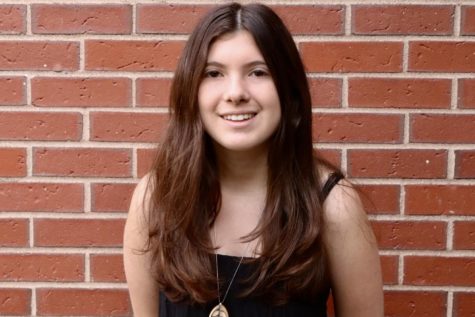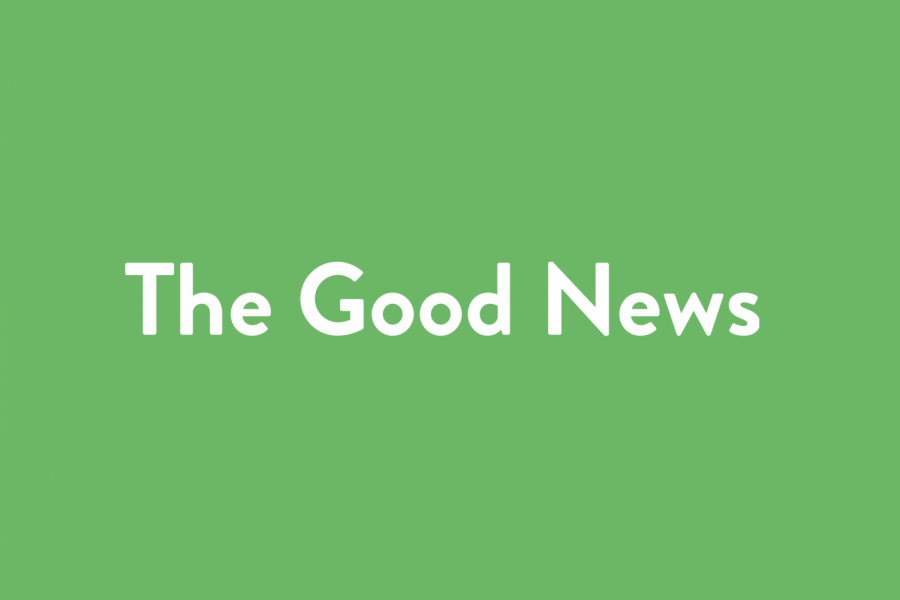The Good News: Week of Oct. 12
In these days, we are all in desperate need of some good news. So, join WSPN’s Alyssa Dickstein as she shines light on one piece of cheerful news every week.
All-day long, we are accosted by negative headlines. In a world where stories like these are the epicenter of our lives, maintaining a positive outlook on life can be hard. Let’s face it, when alarming or negative headlines are the only ones we hear about, it’s easy to lose your faith in the world as a result. With the current outbreak of COVID-19 afflicting our well-being, we all need to hear some good news. But with the pandemic, came encouraging stories like those of young people shopping for their neighbors, volunteers making PPE for hospitals and communities coming together while remaining six feet apart. In order to brighten up your day, here is a current event that, indisputably, qualifies as good news.
This is the story of seven-year-old Cavanaugh Bell of Gaithersburg, Maryland. In just seven years, Bell has done a world of good for… well… the world. The exact extent of the good Bell has done was recently brought to light in this Oct. 5 article by the Washington Post.
After being bullied in school when he was six years old, Bell started the first of many initiatives that he would create and coordinate over the course of the next year:
- He spoke in front of the Gaithersburg city council and successfully pitched the idea that Feb. 21 become Anti-Bullying Awareness Day.
- He started a nonprofit organization called “‘Considering others’ obstacles in life and dish out positive energy,” or “Cool & Dope” for short, which seeks to stop bullying, or rather, seeks to put an end to the negativity and encourage positivity instead.
- During the pandemic in March, he began delivering essentials to his elderly neighbors in an effort to help his community. Additionally, he paid for all of this out of his own pocket, using money he had saved from past birthdays and Christmases.
- Soon after he began to deliver these care packages, he started a food pantry with his mother. A local company lent them the warehouse for the pantry, and the community lent them the donations to keep it operational. They were also touched by Bell’s actions.
- Over the summer, Bell recalled that some of the houses on the Pine Ridge Indian Reservation in South Dakota didn’t have running water or electricity. A few years ago, he had driven through the reservation on a family road trip to Mount Rushmore. Although he did not know it at the time, on the reservation, as many as three families live in a two-bedroom home. In addition, there was an estimated poverty rate of 90% and a suffering economy. So, he made it his mission to help them out. He reached out to his community using his food pantry, GoFundMe and Amazon Wish List pages and asked for donations for the reservation; his community delivered. On July 10, a delivery of nearly $20,000 arrived at the reservation.
- On Sept. 22, he loaded another truck with donations to deliver to the reservation. This time, with $25,000 worth of essential supplies.
Through all of this, Bell still delivers care packages in his community on the weekends. On a recent weekend, he delivered 53 care packages.
“I want people to know that they can do anything — it doesn’t matter if you are eight or 87, you can make a change,” Bell said. “You just need to believe it.”
Your donation will support the student journalists of Wayland High School. Your contribution will allow us to purchase equipment, cover our annual website hosting costs and sponsor admission and traveling costs for the annual JEA journalism convention.

Alyssa Dickstein, Class of 2021, is a third year reporter and second year editor for WSPN. She writes for the publication’s columns “The Good News”...





![Last Wednesday, the Wayland School Committee gathered to discuss a number of topics regarding the health curriculum and Innovation Career Pathway course. Another large topic of conversation was the ways to potentially mitigate distracting cell phone usage. "These [phones] are going to distract your learning and social relationships," Superintendent David Fleishman said. "That's concrete right there."](https://waylandstudentpress.com/wp-content/uploads/2025/06/Screenshot-2025-06-04-at-9.49.31 PM-1200x886.png)



























![Troy Hoyt finishes the Boston Marathon, running for the Hoyt Foundation. T. Hoyt is the son of Hoyt Foundation CEO Russ Hoyt.
“[Running a marathon] might seem like a big thing, when it’s presented to you at first, but if you break it up and just keep telling yourself, “Yes, you can,” you can start chipping away at it. And before you know it, you’ll be running the whole 26 miles, and you won’t even think twice about it.” T. Hoyt said.](https://waylandstudentpress.com/wp-content/uploads/2025/04/C36E8761-1CBB-452E-9DF2-543EF7B1095E_1_105_c.jpeg)











































